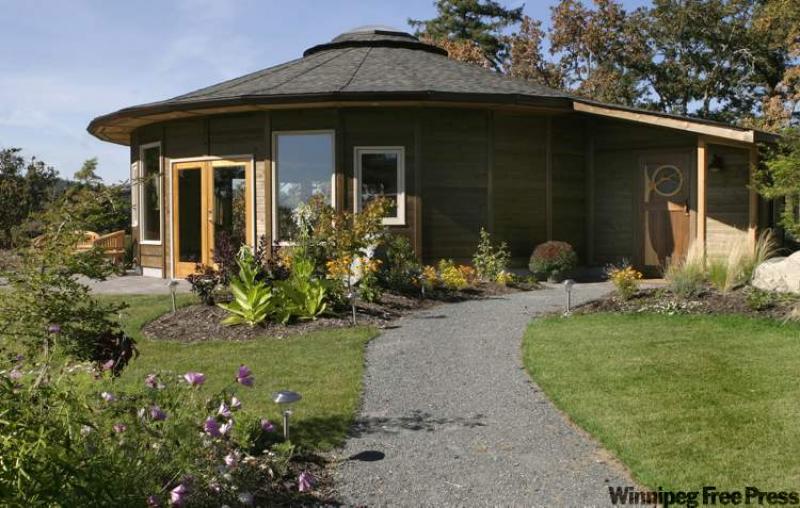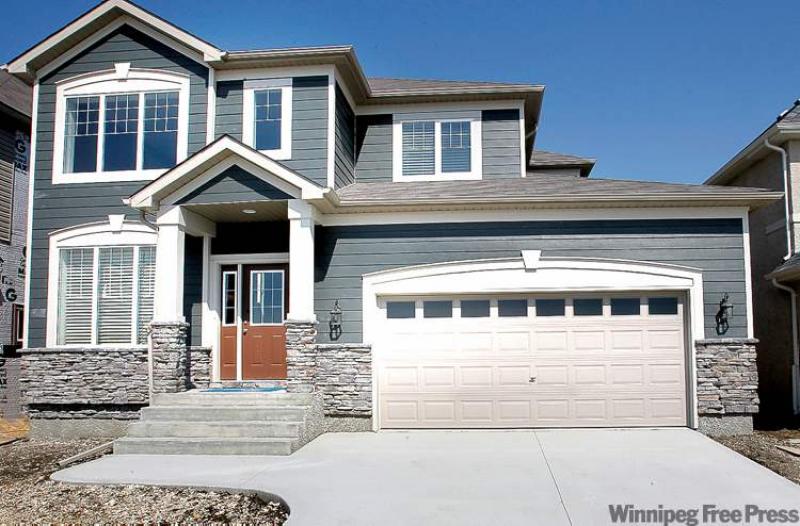New Homes
New Homes
Manitoba leads way in energy conservation
THE Canadian Energy Efficiency Alliance recently released its 8th annual report card and Manitoba led the country for the fourth straight time with an A+ score. It was acknowledged that Manitoba has been a leader in driving energy efficiency initiatives since 1989 and has committed to continued improvement.
In the area of residential construction, both new home and renovations, Manitoba warranted special mention and consideration. Water conservation was recently added to the Manitoba Building Code and Plumbing Code. The Manitoba Home Builders' Association lobbied for the elimination of the old 13-litre toilet tank in favour of the more water conscious low-flow toilet. The MHBA recognized that not only had this installation been the norm in new home construction for years but, in order to make the most significant impact on our environment, it had to be implemented in existing homes when bathroom renovations were needed.
Similarly, aerators on taps and faucets had also been standard components of the new home industry prior to being introduced as part of water conservation legislation.
Another area in which the CEEA gave Manitoba high marks was in the reduction of greenhouse gas emissions. Energy efficiency in Manitoba homes increased by 21.6 per cent between 1990 and 2006 while GHG emissions decreased by 31.3 per cent. The building envelope of a new home in Manitoba is so efficient that considerably less energy is used to heat it in the winter than in older, existing homes.
The Canadian Energy Efficiency Alliance gave Manitoba high marks for energy legislation, changes to the building codes and outreach programs to the public that were done through partnerships, in particular industry associations that could offer immediate implementation. The MHBA was pleased to be one of those partners that were able to facilitate energy conservation.
Through leadership on the Building Standards Board, a close working relationship with Manitoba Hydro, requesting higher minimum standards for products and being on the cutting edge of design and innovation, MHBA members have helped the government formulate energy efficiency standards unmatched anywhere else in Canada.
In conclusion, the CEEA stated that Manitoba has maintained it's A+ standing because it continues to take a progressive approach. The residential construction industry, through new home construction and renovation activity, is proud to be a significant contributor to this success.
Mike Moore is president of the Manitoba Home Builders' Association.
New Homes
New-home construction goes through roof
It was no surprise the first quarter of new-home construction in Winnipeg and throughout Manitoba would be stronger in 2010 than in 2009.
After all, we were just starting to come out of the recession and consumer confidence was still on shaky ground.
However, since the Spring Parade of Homes, new-home construction has been vibrant. Demand for new homes has been consistently solid every month of this year. The first seven months have seen an increase in starts over 2009 --each and every month.
The results are most impressive. To date, in Winnipeg and surrounding areas, there have been 1,096 single family detached home starts. This represents an increase of 283 homes or 34.8 per cent over last year.
Multi-family dwellings present a much more dramatic change. Last year, by the end of July, there had been 163 units started. The economic confidence in initiating projects of this magnitude was very low. However, this year there have been 987 multi-family units started in Winnipeg, a staggering increase of over 600 per cent.
In total, the 976 starts over the first seven months of 2009 have turned into 2,083 starts in 2010. Only cities like Edmonton, Oshawa and Victoria, who were absolutely devastated into complete inactivity by the recession, have shown greater growth this year.
Year-end projections that commenced at 4,600 units for the province are being recalibrated to more likely scenarios approaching 5,000. This would return Manitoba to the levels experienced a couple of years ago.
What is the cause of this increased demand for new housing? There is no single reason; much like our economy, it's diversified. Winnipeg and Manitoba are still experiencing significant growth through immigration and net migration from other provinces.
As well, Manitobans, in general, tend to build up more equity in their homes than other provinces, thereby making it easier to create a solid down payment on a new home. Also, mortgage rates have recently dropped somewhat.
The residential construction industry has had a strong first seven months in 2010 and is expected to be consistent all year. This will bode well for employment and the economy in general. Manitobans are acutely aware that now is a great time to buy a new home and are taking advantage of the opportunity.
Mike Moore is president of the Manitoba Home Builders' Association.
New Homes
Builders leaders in energy-efficient technology
There's been tremendous progress and innovation in making Manitoba new homes more environmentally friendly over the years.
Since 1990, Canada's total greenhouse-gas emissions have increased by 21.7 per cent and, at the end of 2006, stood 29 per cent above the Kyoto target. Canada is obligated to cut greenhouse-gas emissions to six per cent below 1990 levels by 2012.
During the same period, total GHG emissions from Canada's residential sector decreased by 8.5 per cent, despite a 28-per-cent growth in housing stock. Canada's residential housing sector is a GWG-reduction leader over this 16-year period, performing at a rate 40-per-cent better than most other industry sectors.
Since 1990, the number of households in Manitoba has increased by 13.2 per cent, yet the total amount of energy used in these homes is 11.2-per-cent less than in 1990. Although considerable credit must go to switching from natural gas and fuel oil to electricity, we must also acknowledge increased awareness of the consumer and more energy-efficient new homes. Manitoba's new home builders have long been in the forefront of energy-efficient technology, products and building practices.
Overall, the energy efficiency of Manitoba homes increased by 21.6 per cent between 1990 and 2006. Greenhouse gas emissions from Manitoba homes were reduced by 31.3 per cent over this same time period representing an average decrease in GHG per household of 40 per cent.
Almost all of these improvements came about because industry anticipated and responded to a need. These did not occur after the fact due to government legislation. If anything, legislation tends to follow the technological advances of industry being on the cutting edge and ensuring that all participants follow the same progressive proactive practices of the professional builders.
These sustainable practices will help Winnipeg maintain a leadership role for the length of the Our Winnipeg plan and beyond.
Mike Moore is president of the Manitoba Home Builders' Association.
New Homes
Sustainability plans vital to city's future
AT the last executive policy committee and city council meetings before summer prorogue, the Our Winnipeg plan and its supporting documents (complete communities, sustainable transportation, sustainable water and waste, a sustainable Winnipeg) were passed.
This means the city has completed the first phase of an exhaustive process to create a plan and a vision for the next 20-plus years. I say first phase, because these are living and breathing documents. They need to be rigid enough to outline a mission and goals, but flexible enough to acknowledge that there are many ways to get there.
Three of the documents dealt directly with sustainability. This column will review each in terms of the residential construction industry.
Sustainable transportation lists as a primary goal to create a transportation system that is dynamically integrated with land use and supports active, accessible and healthy lifestyle options. The incorporation of the best housing options into the mixed use of rapid-transit stops will make these both appealing and efficient. The financial benefits of less automobile traffic as a result of transit-oriented development should be enjoyed by all. The pending transportation master plan will undoubtedly look at incorporating the most logical housing mix into an efficient system of travel.
Sustainable water and waste dealt with a myriad of issues regarding our water supply. These included quality and supply, wastewater, solid waste management, stormwater and flood protection, and the policies that will support this most valuable resource.
The members of the Manitoba Home Builders Association have been at the forefront of a number of issues related to water conservation. For example, the MHBA made low-flow and dual-flush toilets the industry standard long before any government legislation.
The same holds true for tap and faucet aerators and low-flow shower heads. In fact, the MHBA made a formal presentation to the province suggesting that these measures become mandatory in new homes and renovations a few years ago.
A sustainable Winnipeg brings together all of the principles discussed in these documents and attempts to make them key factors in any city decision-making process.
Mike Moore is president of the Manitoba Home Builders' Association.







